Duplicating trees Part 2- making the replacement
We are no longer building saddle trees, but we have two videos about how Western saddles fit horses available on our westernsaddlefit.com website.
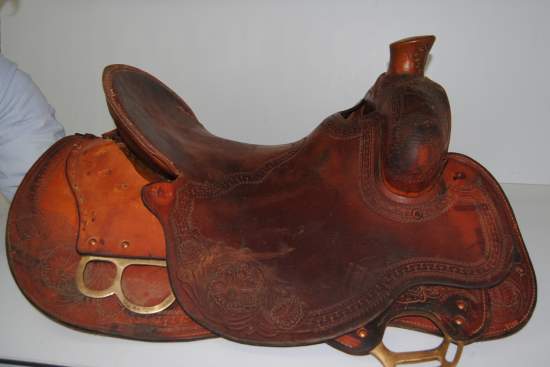 |
| This is a different tree than the last post, finished and with a lot of the leather in place. It should go back together pretty well. |
Figuring out the specs
Once we have all the measurements taken, Denise goes to our charts and tries to figure out how we can make something come out the same but built with our angles. If the cantle angle looks different than what we make, if the cantle cuts on the bar are a lot different, if the cantle corners come farther down or up the bar than ours do, how do we make the seat length right so the seat still fits, but get the thigh length right so the seat jockey fits between fork and cantle properly? Can we make the cantle height at the back measure the same so the cantle back still fits on yet make the face work for the seat when the angles are all different? And if we are changing the fitting specs from a 5” wide hand hole to a 4” wide hand hole (which we have done) how can we do that and still have the skirts and fork cover go back on easily? It is often the more poorly made trees that are the hardest to get right.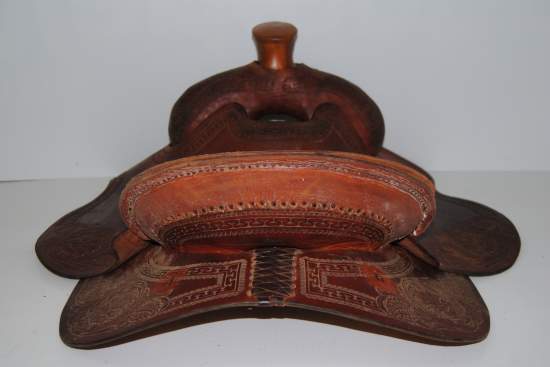
Making patterns
Next, Denise uses the old pieces to make outline patterns for the fork and cantle. “So, which side of the cantle do you want me to copy, Rod?” Not an uncommon question… We do make the replacements symmetrical, even if the original wasn’t. Originally, we just drew the patterns on the wood and made the tree. Now, we are making patterns on poster board to keep, because sometimes those patterns come in handy when another duplicate tree comes in.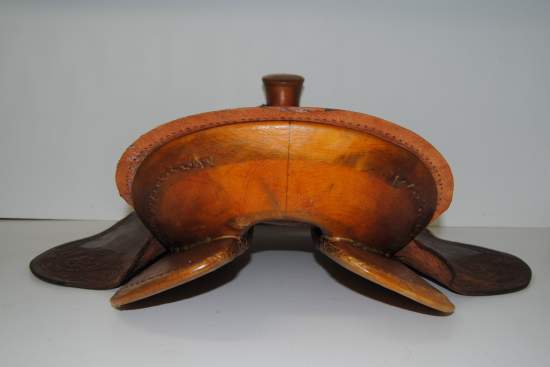
The fork and cantle are then marked out with the new patterns. Denise marks out the angles on the bars, but Rod gets to mark out the bar outlines so they fit into the old skirts and yet will work to fit horses as close to the way we normally do as possible. Often that means gluing pieces of broken bars back together to try to figure out what the shape originally was.
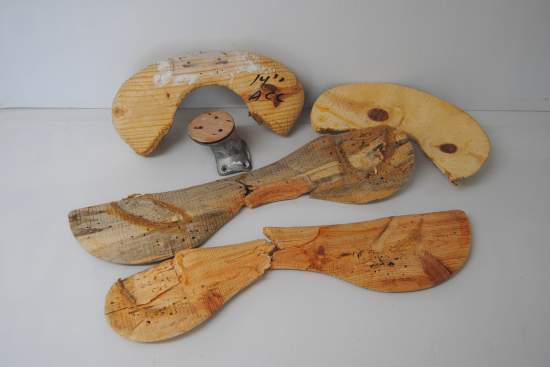 |
| It can be "interesting" to see what is under the rawhide and paint. We replaced this metal "post horn" with a real wood post horn on this tree. |
Building the tree
Cutting out the pieces is normal, but shaping takes a while as Rod goes back and forth between the old pieces of the trees and what he is making new, trying the old leather on, seeing if it hangs up anywhere or if it looks like it will fit with the rawhide on. Once he is satisfied that all the pieces will work together, the tree is temporarily screwed together and things like the seat cover and the skirts are tested to see how they fit on the wood tree, making allowances for the rawhide that will be there. If we are happy with it, the tree is permanently glued and screwed together as normal. Rawhiding is pretty routine too.
Checking it out
When the tree is finished in the rawhide, the leather is tried on again to see how close we got it. The groundseat usually will need to be replaced, and depending on fit changes, sometimes things like gullet pieces need to be replaced as well. But our customers have been pleased with how well the saddles go back together with the replacement trees.
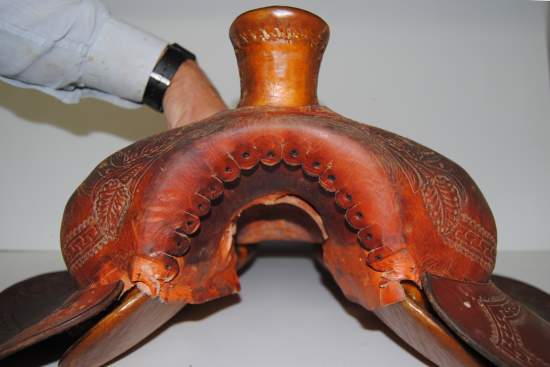 |
| The fork cover and gullet piece fit nicely on this tree. The saddle maker doing the repairs shouldn't have problems putting this one back together. |
Changing the fit
Often the fit problem is that the bars are spread too far apart and are too narrow, having little overall surface area. We try to increase the bar depth if it is possible and still fit the skirts OK. This increases the surface area on the horse and so distributes pressure better. Narrowing the spread means that the saddle maker often has to put a bit more rise in the seat to make the leather fit back on. However, depending on how the skirts have been made, often we can narrow the spread by increasing the depth of the bars. Depending how the skirts are attached, how and if they have been blocked, we have sometimes shortened the bar tip to help the fit problem. (A lot of trees have longer bar tips than what our normal trees do.) Changing the rock or twist generally isn’t a problem.
Challenging, but…
Over all, building copy trees is rather fun, seeing how close we can make it in looks while making it more functional than it was when it came in, and, in a lot of cases, more functional than it was originally. And seeing the different ways the saddle makers have built the saddles is neat. Seeing what is under the rawhide and paint is “interesting” too. Knowing how long some of these trees have stood up to hard work, and seeing the quality of materials that are in them makes us really confident that our trees will continue to hold up to whatever work they are subjected to.
